Reflexive Modernity — The Work Of Chris Paul Daniels
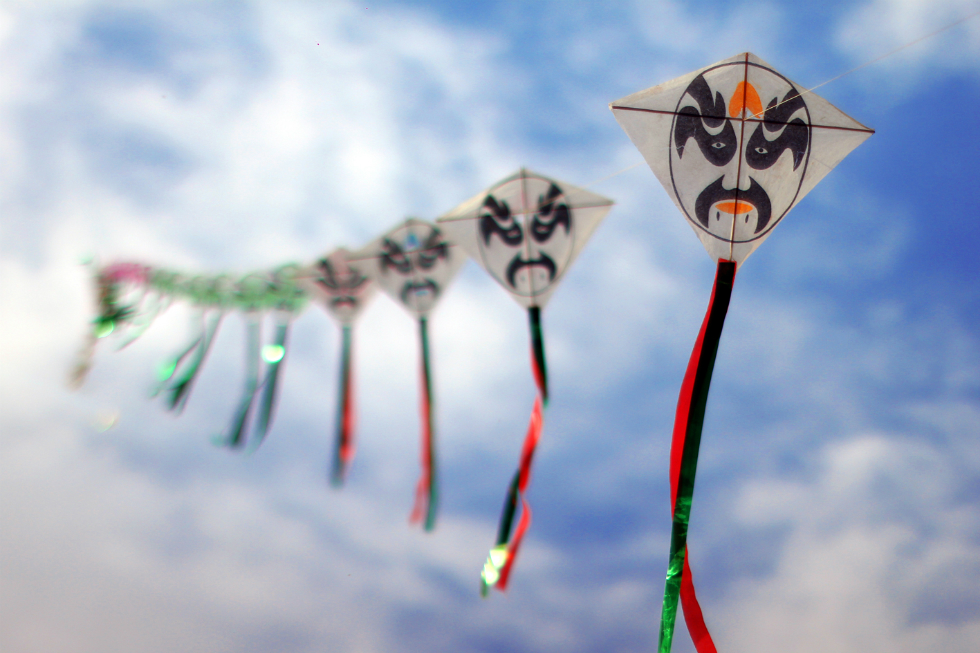
Charting our own lives in the framework of individual and national identity: Amelia Crouch assesses the audio and film work of artist Chris Paul Daniels…
In Chris Paul Daniels’ 2013 film Premier/Divisions the first voice on the soundtrack begins: “I am creating a story about a place that I don’t live [in], but I experience as a tourist and by virtue of that I have a very peripheral, very romantic idea of what this is.” The speaker is a Kenyan woman; she is not the artist. Yet as she continues we suspect she is voicing the artists’ intent: “the reality, the mundane, the normal is what I am interested in getting to.”
This quotation — from one of a collage of Kenyan nationals and longtime residents whose spoken meditations make up the film’s soundtrack — sets the scene. It also introduces a layer of artifice. If this speaker is voicing the artists’ concerns then perhaps all of the speakers are doing so too; if not literally, then in the selection and editing of their words.
Artifice and authenticity are themes that run throughout Chris Paul Daniels’ recent work; from his series of outsiders’ portraits of particular places — Nairobi, Kenya in Premier/Divisions, various cities in China in A Tiger’s’ Skin, and Birmingham, UK, in You Are Here — to his new artwork, SAFE at HOME: An Audio Guide. The latter, commissioned by HOME art space, Manchester, features as part of their current group exhibition Safe.
Daniels’ works are sometimes witty and sometimes disquieting commentaries on our globalised contemporary culture. His films are ostensibly documentaries but repeatedly use techniques that undercut the habitual authority of this format. SAFE at HOME subverts another ‘authority’ format — that of the audio tour.
Probing the role that representations play in the construction of individual and national identity, his artworks Premier/Divisions, A Tigers’ Skin and SAFE at HOME contest the existence of ‘true’ images or authentic identities. In a world where we are increasingly offered only impoverished, deterministic narratives of self they posit artistic agency as a discursive and more complex alternative.
On being a tourist
Premier/Divisions was filmed during an artists’ residency in Nairobi in the immediate weeks before the 2013 Kenyan election, and is introduced with the stark fact (white text on black screen) that following the previous 2007/8 election, over 1200 people were murdered and 600,000 displaced in tribal, class and political conflicts. Early in the film, we watch a scene of children playing in the street as a woman explains that “ugly” attitudes came to the fore in 2007, with friends and family threatening to kill each other. Another woman recalls the murder of her nephew as on screen a pile of rubbish is burning. Yet, overall, the film touches only lightly on violence and knowledge of this violence seems at odds with the calm, reasoned voices we hear.
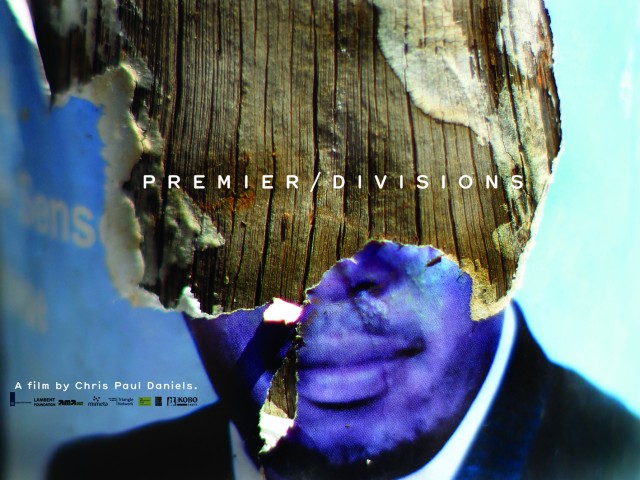
The film’s dominant narrative is subtle, not sensational. It concerns the multiple identifications and divisions (as per the title) that exist both within Kenyan society and between Kenya and the West. Discussing recent conflicts, one speaker describes “tribe” as an excuse, not a motivator for violence, with Kenya’s young becoming increasingly aware of a previously neglected ethnic heritage. Others suggest that politicians opportunistically encourage identifications and voting along ethnic lines. Most contributors posit that conflicts are really based on class and wealth inequality, with tribe simply providing a convenient narrative for misuse: “when there’s a political or economic advantage to be gained, people will find a reason to separate.”
Accompanying imagery includes a series of quickly intercut photos and illustrations of individuals in tribal dress, plus weapons and figurines. Elsewhere, Daniels inserts footage of sunsets and wild animals, referencing an exoticised view of a country where many tourists go on safari (and more murkily we hear, seek out sex tourism). Tourists — a woman laments – are not interested in Kenya as a place, but only “in whatever experience they’ve channeled and that they think represents the money they have spent to get here.”
Stereotypical images are contrasted with footage of Nairobi’s modern cityscape, where crowds wear largely Western dress. Since the late 1980s, when cheap imports were first allowed, Kenyans have favoured Western styles. Kenya — a British colony from 1920-63 – has a complex historical relationship to the West. As viewers we look (with Daniels) as outsiders, yet the speakers (Africans from whom Daniels constructs his view) repeatedly refer to European and American influence on them.
A woman mentions how families struggle to send their young abroad and that as a result “Kenyans wouldn’t pay any attention to local musicians, to local artists, to local anything. It had to have a stamp of approval from America or from Britain.” Recently, regretting the lack of a national costume, a competition was held — presumably by the government — for entrants to design one. But this attempt to retrieve or create an imagined national identity failed.
Premier/Divisions highlights the importance of representations in the creation of individual and cultural identity. Where Kenyans identify (perhaps unwittingly) via tribal allegiances when it suits them, tourists visit the country seeking only to have their expectations met. The film aims to get beyond a romantic depiction of Kenya but ultimately proposes that there is no authentic reality to be uncovered. It presents a view of cultural identity that is complex, reciprocal, fragmented and layered.
On visiting art galleries
Why do we visit art galleries? Listening to Daniels’ new audio artwork SAFE at HOME: An Audio Guide, I was reminded of a recent audience survey that I completed. Possible motivators for gallery visiting included: to be moved emotionally; to improve my own knowledge and understanding; and to spend time with family and friends.
SAFE at HOME’s narrative is one of cultural experience as self-development. Presented as a self-help audio guide that proclaims to transform the listener through “regenerative thinking” and “cultural redevelopment,” it provides an idiosyncratic tour around HOME’s new gallery spaces led by the effusive voice of artistic director Sarah Perks. Content combines ideas and occasional quotes taken from self-help books, popular culture, song and — I suspect — HOME’s own marketing copy.
Visitors are invited to progress through seven levels to “fully realise your potential.” To give a flavour of the tour, it periodically draws one’s attention to specific features of the gallery – some piping, some marks on the wall – before spinning off into reassuringly delivered metaphysical gabble: “take a last glance at that only window in the room, see only windows of opportunity that open your consciousness to an expanded world.” A series of accompanying videos “YOU ARE A POWERHOUSE!” are exhibited on screens around HOME’s building and released as viral videos online in the run up to the exhibition.
The work is a wry critique of the language of arts marketing, cultural regeneration and participation that arts venues (like the super-structure that is HOME) use to promote themselves, and plaudits go to HOME and Perks for allowing an artist to poke fun at them in this way. More broadly, SAFE at HOME considers the relationship between cultural participation and self-actualisation. The motivation for visiting a gallery in the UK or for asserting a tribal allegiance in Kenya may — on the face of it – seem quite unrelated. Yet both pertain to a search for ‘authentic’ experience and meaningful relationships in a world where uncertainty prevails.
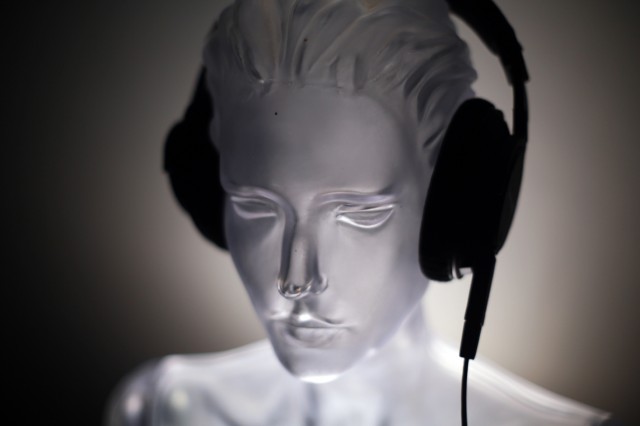
In his article The Trajectory of The Self (1994), sociologist Anthony Giddens focuses on self-help literature and personal-growth therapies as illustrative of new conceptualisations of the relationship between self and other, that emerge as part of a self-oriented contemporary ‘post-traditional’ culture. He is writing about a world where we are increasingly freed from pre-established ties (tribe or kinship for example). For him, these are replaced by what he calls a ‘reflexive’ project of the self. We can no longer appeal to tradition for the way things ought to be, and instead have to actively choose the course of our life.
Giddens’ analysis of the state of the world is illuminating, yet his suggested solution is problematic. He asserts that in modern culture: ‘The moral thread of self-actualisation is one of authenticity’; of ‘being true to oneself’. It is this notion of truth and authenticity that Daniels’ work queries.
SAFE at HOME and Premier/Divisions show contrasting responses to ‘reflexive modernity’ and question whether we can, in reality, effectively chart our own lives. In Kenyan society, as depicted by Daniels, we hear of divisive attempts to return to (partially imagined) traditional structures. In SAFE at HOME, we are shown that reflexivity can lead to anxiety not fulfillment. The patter of ‘choice’ becomes akin to an internalised marketing spiel.
The quotes and multiple references that structure the audio tour signal that our ideas are not our own. In the search for ‘self’ we turn to authority figures for guidance (even if they spout nonsense) and seek meaning and purpose in representations given from elsewhere. We visit galleries for what we think are our own, personal reasons, yet cultural research agencies segment us as one of a limited set of ‘types.’
This might all sound rather fatalistic, but Daniels offers some hope. It seems to me that his artworks assert an ongoing urge for collective endeavor and communal relationships that aren’t prescribed or ultimately narcissistic. Surreal sections of SAFE at HOME take the listener on two “guided visualisations.” In the first, a rat is taken to represent anxieties about being an outsider. In the second, a “huge mound of freshly cut hair “ speaks to the listener, representing a “clear voice of collective entanglement” which – in a world “without fixed beginnings and ends” — longs for the collective past.
These sections indicate a hopefulness that, within the circumscribed space of the art centre (where ‘sharing’ and ‘creativity’ feel a bit slick and commodified), there can still be space for meaningful encounters. Whilst Daniels’ works question the possibility of authentic representations, they nonetheless advocate for representation-making as an important, active and communicative process.
On being an artist
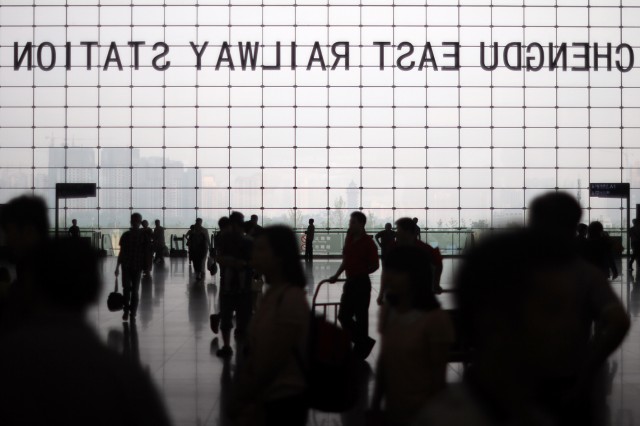
Chris Paul Daniels often works in response to particular commission or residency opportunities. It is a methodology indicative of a climate where artists are increasingly asked to propose project specific or location specific artworks in order to achieve funding. Other instances include the aforementioned You Are Here, a film project based on interviews with multiple Birmingham residents, commissioned by A3 Project Space; and Connect/Exchange, a residency at New Bridge Project Space in Newcastle where Daniels’ questioned locals about their identifications with the word ‘Northern’ (an approach influenced by funding coming from Northern Film + Media).
Akin to the pressures under which HOME brands itself, artists today find themselves working toward ends such as exchange, collaboration or participation rather than having free reign for their ideas. Yet Daniels’ works — that involve multiple voices, question the limits of filmic representation and create considered explorations of place — turn constraints into a positive. The confines of project-based working have allowed him to develop a strong artistic voice that is individual (with its own aesthetic and conceptual concerns) yet discursive (influenced and involved with the places and people that he encounters).
A Tiger’s Skin — Daniels’ film portrait of China — is a case in point. Produced for Transnational Dialogues (a project funded by the Arts Council and the British Council’s Artists’ International Development Fund) the film pairs scenes of people travelling, shopping, walking etc., with a voiceover monologue derived from Michelangelo Antonioni’s 1972 film Chung Kuo Cina. Daniels used Antonioni’s film — another foreigner’s view that had informed his prior limited knowledge of the country — as a guide, revisiting places Antonioni depicted 40 years before.
The film is punctuated with short time-lapse sections that show cityscapes; tower blocks with lights flickering on and off, edited to the rhythm of upbeat karaoke. These scenes depict a populace, a mass of activity; and their obvious manipulation reiterates that looking at another culture is not a simple, transparent activity. They also assert a strong visual aesthetic that permeates Daniels’ films.
His films frequently consist of fixed, meticulously framed shots where activities in front of the camera are allowed to unfold over a period of time. This provides an aesthetic coherence and gives an opportunity for the viewer to look carefully, and construct interpretations beyond what is overtly stated.
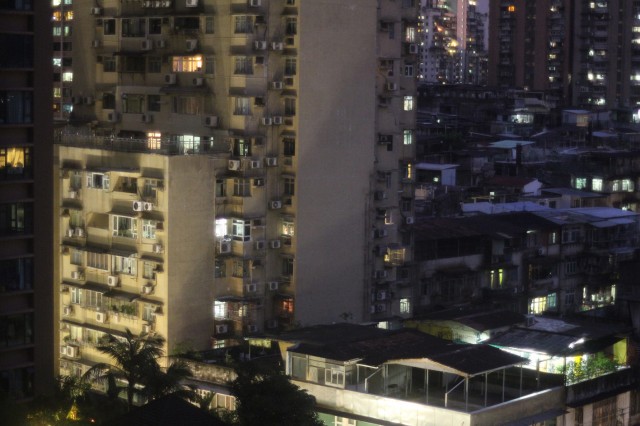
When I watched A Tiger’s Skin last year, at Manchester’s Chinese Centre For Contemporary Art (CFCCA), it took me a while to register that the film’s verbal information was anachronistic. I watched men working on a building site as the voiceover discussed workers’ conditions under communism. The narrative described visiting an art gallery, praised for putting the artwork “to the service of workers”, whilst I viewed a white-walled contemporary gallery showing abstract art.
Gradually, I realised that the subtitles and voiceover describe an earlier time. Where the narrative evidences a shift from a feudal to a communist society, the mismatch between word and image in Daniels’ film conveys more recent societal shifts in China as the country is increasingly influenced by capitalism.
The film returns several times to footage of large groups undertaking dance or exercise sessions. These sections are compelling, both for the overall movement within the scenes and the enjoyment of watching and picking out individuals. In the context of the film’s narrative I found myself interpreting these collective activities, and the odd lone movers skirting the edge of a couple’s dance session, as representative of a tension between collective and individual interests in China.
A Tiger’s Skin does not romanticise communism but — like the guided visualisations in SAFE at HOME — these scenes evoke yearning for communal activity as an alternative to the individualisation expounded by Giddens. The attention given to these acts reminds me too of an aspect of Premier/Divisions that I have neglected thus far. Within that film there are several prolonged scenes of bands playing or choirs singing. Extended takes pay homage to their performances and, though any presumption of the performances as ‘authentic’, Kenyan culture has been curtailed, they demonstrate vivacity and skill.
Similarly, we see recurrent shots of Kenyan artists working on their creations. These are individuals and groups who — like Daniels — are involved in developing their own visual or acoustic language, perhaps counter to dominant trends. Daniels produced Premier/Divisions during a five week residency at Kuona Trust Arts Centre in Nairobi, and many of the film’s narrators are artists who influenced the development of his work.
Our investment in and identification with representations is a serious issue. In Kenya, contested depictions of national identity have recently led to violence. In the UK, we inhabit an era where ‘culture’ has become part of a narrative about development (personal and/or civic). China seems torn between two stories: a communist past and a capitalist future. Exploring and responding to the power that representations hold, Daniels’ work offers not authenticity (a more ‘true’ depiction) but discursivity.
Resisting Giddens’ notion of a self-possessed individual compelled to individually choose their life course, Daniels’ works acknowledge the perpetually embroiled nature of individual and group identity. Like the artist who must negotiate commissions and residencies to survive, we each live our lives shaped by the circumstances and the identifications available to us. Moreover, it is often with — or in response to — the work of others that we are able to make our most meaningful contributions.
Amelia Crouch
See SAFE at HOME and YOU ARE A POWERHOUSE!, exhibited as part of the exhibition Safe at HOME, Manchester, until Sunday 3 Jan 2016
This article has been commissioned by the Contemporary Visual Arts Network North West (CVAN NW), as part of a regional critical writing development programme funded by Arts Council England — see more here #writecritical





